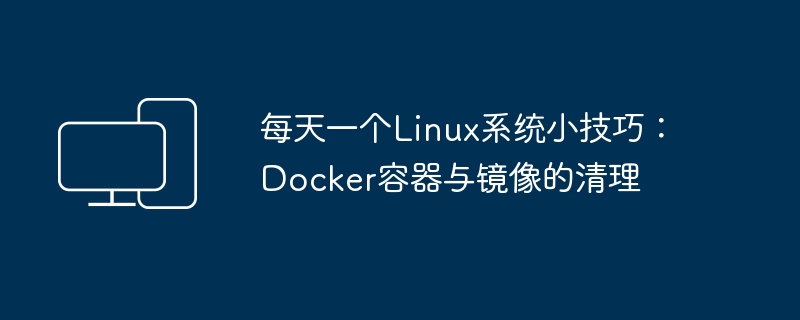

Docker, as one of the most popular containerization technologies, is widely used in development, testing and production environments. However, with the continuous creation and use of containers and images, a large number of useless containers and images may accumulate in the system, occupying a large amount of disk space, and even affecting the performance of the system. Therefore, regularly cleaning Docker containers and images is a very important maintenance task.
Today we will introduce some tips related to Docker cleaning to help you better manage the Docker environment.
By running the `docker ps -a` command, we can view the status of all containers, including running and stopped ones. Based on these statuses, we can decide whether a specific container needs to be deleted.
Example: Delete all stopped containers
docker container prune
This command will delete all stopped containers, but will not delete running containers. If you want to delete all containers (including running ones), you can add the -f or --force parameter:
docker container prune -f
Use the docker images command to list all images. Similarly, we can judge whether it needs to be deleted based on the usage of the image.
Example: Delete all unlabeled images
docker image prune
This command will delete all untagged images, that is, those that are not referenced by any container. If you want to delete all unused images (including those with labels but not referenced), you can add the -a parameter:
docker image prune -a
In addition to containers and images, Docker will also occupy some other space, such as build cache, container volumes, etc. In order to completely clean up the space occupied by Docker, we can use the docker system prune command.
Example: Clean up all space occupied by Docker
docker system prune
This command will delete all stopped containers, untagged images and build caches. If you want to delete all unused resources (including tagged but unreferenced images and container volumes), you can add the -a parameter:
docker system prune -a
Precautions:
Before executing cleanup commands, please make sure we understand the role of these commands and have backed up important data and configurations.
Using the -f or –force parameter will forcefully delete the resource without any confirmation prompt. Please use with caution.
The cleanup operation may take some time, depending on the number of containers and images in the system and the performance of the disk.
By mastering these Docker cleaning techniques, we can better manage the Docker environment, free up disk space, and improve system performance. Hope these tips can be helpful to everyone!
The above is the detailed content of A Linux system tip every day: Cleaning up Docker containers and images. For more information, please follow other related articles on the PHP Chinese website!
 The difference between k8s and docker
The difference between k8s and docker What are the methods for docker to enter the container?
What are the methods for docker to enter the container? What should I do if the docker container cannot access the external network?
What should I do if the docker container cannot access the external network? What is the use of docker image?
What is the use of docker image? How to use ffdshow decoder
How to use ffdshow decoder How to use html for web navigation
How to use html for web navigation Introduction to parametric modeling software
Introduction to parametric modeling software The role of registering a cloud server
The role of registering a cloud server



